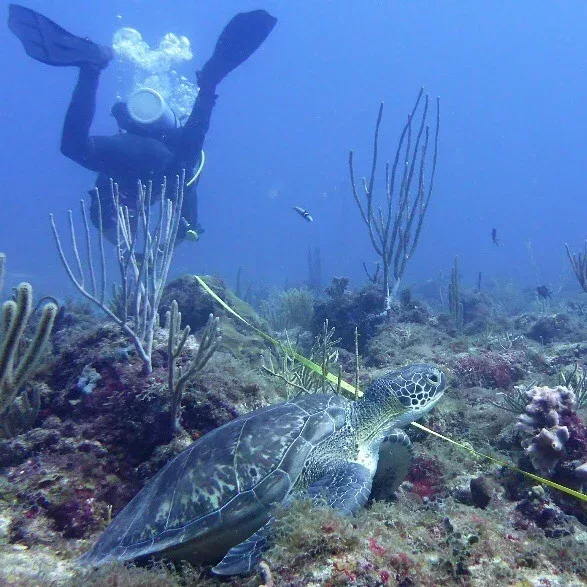The Sint Maarten Nature Foundation has started to scientifically monitor the state of the country’s coral reefs after the passing of hurricanes Irma and Maria in September. With financial support made available by the Dutch Caribbean Nature Alliance the Foundation has started to research the state of the Country’s coral using the GCRMN method; “Reef monitoring is conducted every year to determine the health, composition and state of our reefs. We did our last monitoring in August right before Irma so we have good information which we can use to compare the impacts that the coral reefs have experienced. Right after the storms and since then we did some qualitative measurements but in the coming week using the GCRMN method we will be able to scientifically establish what those impacts are,” commented Nature Foundation Manager Tadzio Bervoets.
The Nature Foundation surveyed mainly dive sites in the Man of War Shoal Marine Protected Area and other important dive sites around the island. All measurements are conducted along a transect line and repeated five times on one dive site. First, abundance and biomass of all fish species is determined, secondly the cover of reef organisms (corals) are analyzed based on photo quadrats made during the dives and photo quadrats are assessed for coral health. Monitoring is also done looking for coral recruitments (juvenile corals) and algae coverage and height. Lastly, invertebrate species (sea urchins, sea cucumbers, lobster and conch) are counted and water quality is measured. These measurements will help better understand the impact Hurricanes Irma and Maria has had on Sint Maarten reefs. The method will also allow for the comparison between reefs on SInt Maarten and in the region.
“Coral reefs are critical to the economy of the island. Studies conducted by the Nature Foundation has shown that reefs contribute about USD$50 million to our economy annually so it is critical that we know their status and their ecological function after experiencing the strongest hurricanes on record,” concluded Bervoets.

